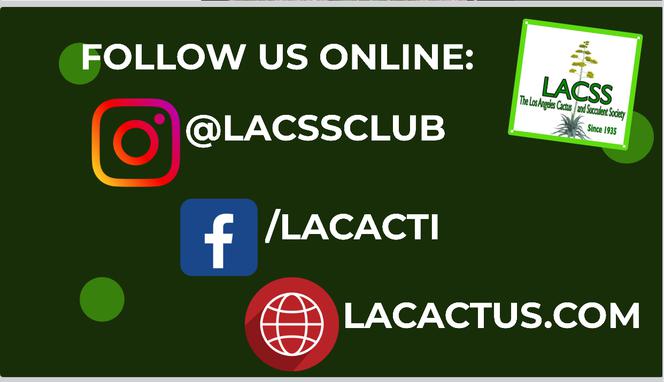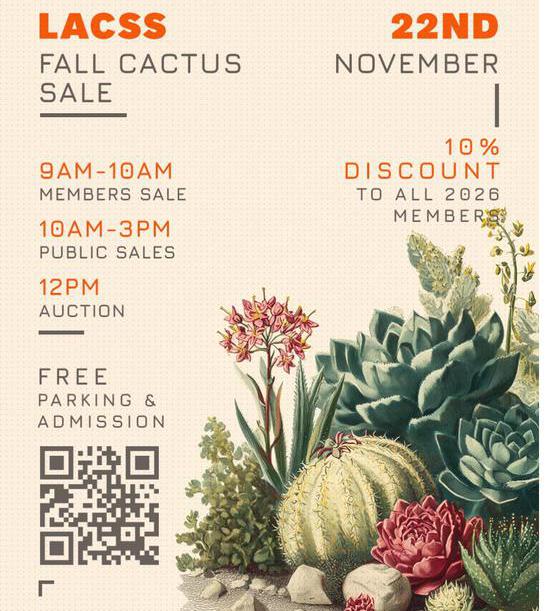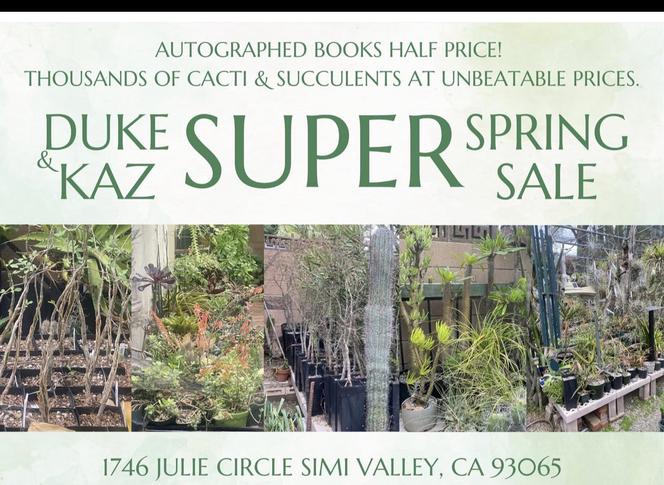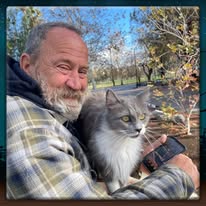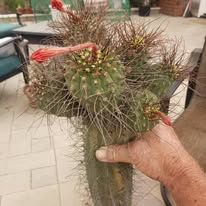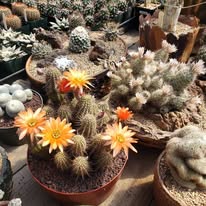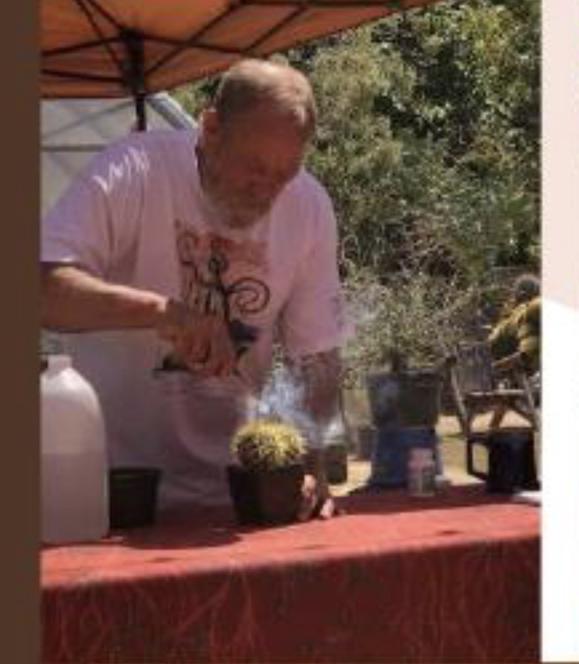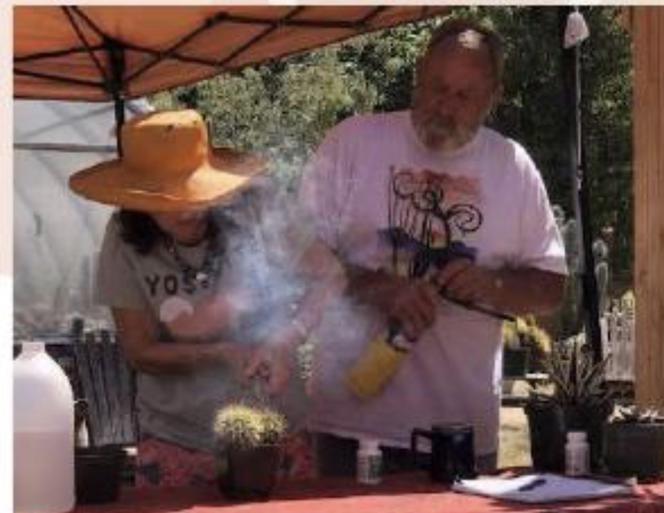Los Angeles
Cactus and Succulent Society
Come and Visit!
Welcome to the website of the Los Angeles Cactus and Succulent Society. Our nearly 200 members come from throughout the southland and share a passion for cacti and succulents. Throughout the history of LACSS, many of the most prominent researchers, authors, and collectors of the succulent world have been leaders and members of our society.
LACSS meets monthly in the San Fernando Valley to enjoy stimulating presentations, hands-on workshops, plant sales, mini-shows, raffles, trading, and other activities. In addition, LACSS offers field trips to member gardens, nurseries, and private collections. We serve the greater community by offering free educational activities, and presenting an exciting annual festival in April or June, and a Fall Sale.
In order to share the joys and benefits of collecting and cultivating cacti and succulents, we invite you to check out our general meetings on the 1st Thursday of each month at ONEgeneration Senior Enrichment Center at 18255 Victory Blvd.
Doors open at 6:15 for the Social Hour, Ask an Expert, and much more. The business meeting starts promptly at 7pm. Attendance is FREE and open to the public. Each new visitor receives a free plant! We hope to see you at a meeting soon.
This page requires a password
Renew your membership NOW!
REFRESHMENT REMINDER
Our next meeting is Nov 6, 2025. First Name beginning E,H,M and W please bring treats! If you missed your month this is a great time to bring a treat to share.
It is a collective effort that we provide refreshments for our members at the meeting! As you know, bringing refreshments to the meeting is a way to make our meetings more enjoyable and welcoming for everyone.
Now for the remainder of the year if your first letter of your First name begins with the letter please bring in something to share.
November E,M,W, AND H
We kindly ask that each member brings a small contribution of snacks or drinks to share with the group. A lot of us are coming straight from work and appreciate that we are mindful of empty stomachs.
Examples of refreshments that you could bring include:
Appetizers / Sides Cookies or pastries Fruit or vegetables Chips and dip Finger food Pizza
Please bring your contribution in a “disposable” dish!
If bringing refreshments is a difficulty, we ask that you leave a donation in the “Donation Jar” at the Refreshment Table. The club relies on your contribution to continue supplying our membership with sustenance.
We appreciate your cooperation and look forward to seeing you at the meeting.
Thank you,
LACSS
Meeting
Nov 6, 2025
Doors open 6:15PM
One Generation
18255 Victory Blvd
Reseda CA
Hot Nail that Cactus in its
Meristem!
PROPAGATION
You have all probably heard the stories. Cut a white rhino agave in half to propagate it! Hot nail that cactus in it's meristem! Go ahead! Try it! If you haven't heard Rob Roy McGregor, here's your chance to see the man in person! Rob is an amazing, self taught, cacti, and succulent grower, and will be giving an educational and fun presentation. Join him at the One Generation Center on November 6, 2025. He will be discussing propagation with us, and as always will take any of your questions. Do not miss this rare opportunity!
November Plants of the Month:
Crest and Monstrose
November Program
Rob Roy McGregor
Los Angeles
Cactus and Succulent Society
SAVE THE DATE
November 1, 2025 Duke and Kaz End of Summer Clearance Sale 1746 Julie Circle Simi Valley 9am
18255 Victory Blvd Reseda CA


